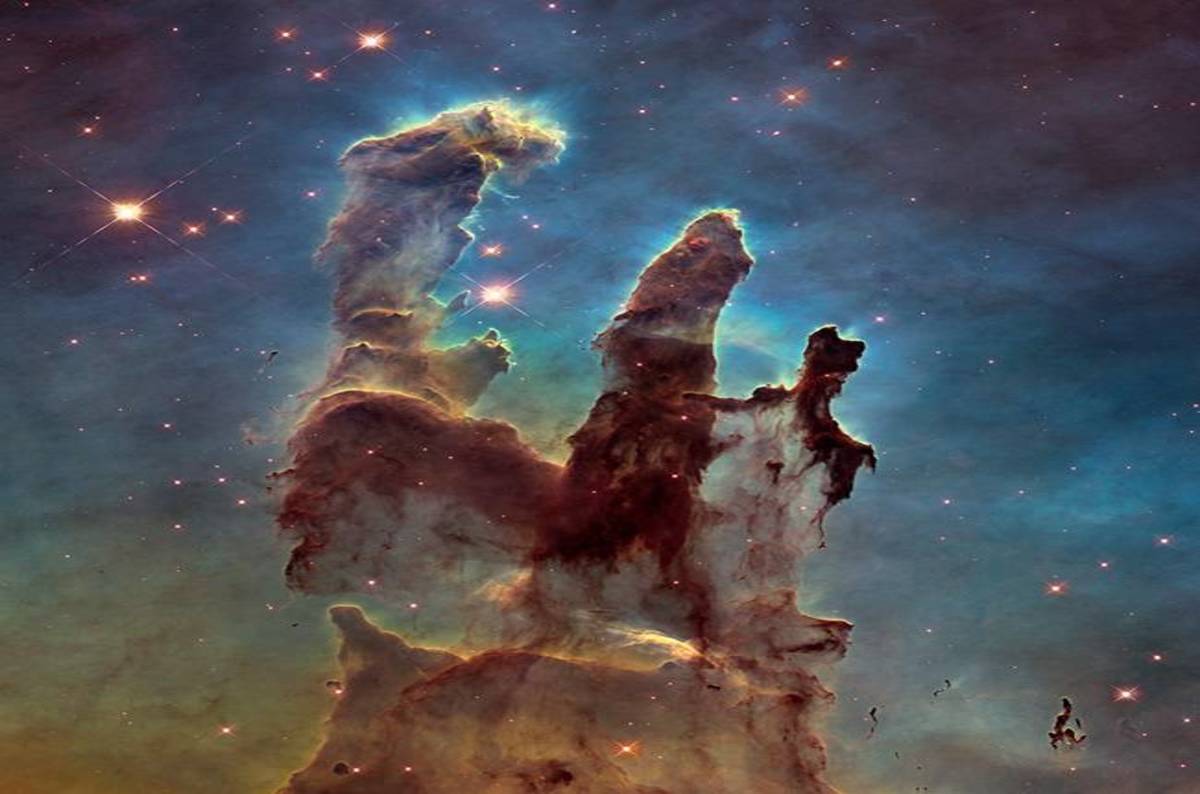Hubble - And The Art Of Repentance
NASA's Hubble Space Telescope was launched from the Kennedy Space Centre in Florida on April 24, 1990. Expensive Cargo onboard the space shuttle Discovery. Hubble marked the most significant advance in astronomy since Galileo's telescope 400 years ago. Our view of the universe has never been the same since then. But, shortly after the Hubble Space Telescope was switched on, the pictures were coming back fuzzy. 2.5 billion US Dollars had been spent developing and launching Hubble - a public relations disaster! Following much checking and searching, it was found that a part of the mirror had been overpolished. This caused the telescope's primary mirror to have an aberration, affecting clarity of the telescope's early images.
A committee was tasked with fixing and defuzzing Hubble. Around 30 proposed solutions were submitted to for study: “Move the focal point back”, “put in another mirror” etc.. Interestingly, the approach they accepted was to exactly replicate the circumstances of the fault here on Earth, and then find a means of correcting it. This could then could be transported to the Hubble. The flaw was found to be around 1/50th the thickness of a sheet of paper. It struck me that this process was similar the Jewish idea of Teshuva – repentance - of replicating and overcoming the circumstances that gave rise to a sin.
The 12th century Jewish philosopher, Maimonodes (Rambam), describes true repentance as being in the exact same situation as the past and refraining from repeating the same behaviour. This wipes the past and shows that a person has changed for the better (there is a lot more, but too heavy for this blog). Religious or not, we are all subject to different temptations, doing things we regret. Usually private, personal matters. Sometimes the same situation occurs every day, or maybe unexpectedly many years hence. Sometimes we take the chance to fix things, other times we just carry on.
For Hubble, it was hoped that the installation of a new device - COSTAR (Corrective Optics Space Telescope Axial Replacement) – would correct the problem of the mirror’s outer edge which was causing a blurred halo on images taken. Hubble orbits 353 miles above earth. It took three years before NASA would mount a repair mission. The Space Shuttle Endeavor ferried a crew of seven to fix Hubble during five days of spacewalks, also installing 2 new cameras. And in December 1993, the first brilliant new images from Hubble reached Earth.
Many of you will have seen the photo below of the so called "Pillars of Creation", vast columns of interstellar gas and dust in the Eagle Nebula, some 7,000 light years from Earth. This one of many amazing sights we can only now see clearly because of the tiniest correction to a telescope's lens.

Sometimes, like the telescope, the changes we need to make are tiny, but grow with time and distance. Small changes can make a big difference. Happy New Year.
A committee was tasked with fixing and defuzzing Hubble. Around 30 proposed solutions were submitted to for study: “Move the focal point back”, “put in another mirror” etc.. Interestingly, the approach they accepted was to exactly replicate the circumstances of the fault here on Earth, and then find a means of correcting it. This could then could be transported to the Hubble. The flaw was found to be around 1/50th the thickness of a sheet of paper. It struck me that this process was similar the Jewish idea of Teshuva – repentance - of replicating and overcoming the circumstances that gave rise to a sin.
The 12th century Jewish philosopher, Maimonodes (Rambam), describes true repentance as being in the exact same situation as the past and refraining from repeating the same behaviour. This wipes the past and shows that a person has changed for the better (there is a lot more, but too heavy for this blog). Religious or not, we are all subject to different temptations, doing things we regret. Usually private, personal matters. Sometimes the same situation occurs every day, or maybe unexpectedly many years hence. Sometimes we take the chance to fix things, other times we just carry on.
For Hubble, it was hoped that the installation of a new device - COSTAR (Corrective Optics Space Telescope Axial Replacement) – would correct the problem of the mirror’s outer edge which was causing a blurred halo on images taken. Hubble orbits 353 miles above earth. It took three years before NASA would mount a repair mission. The Space Shuttle Endeavor ferried a crew of seven to fix Hubble during five days of spacewalks, also installing 2 new cameras. And in December 1993, the first brilliant new images from Hubble reached Earth.
Many of you will have seen the photo below of the so called "Pillars of Creation", vast columns of interstellar gas and dust in the Eagle Nebula, some 7,000 light years from Earth. This one of many amazing sights we can only now see clearly because of the tiniest correction to a telescope's lens.

Sometimes, like the telescope, the changes we need to make are tiny, but grow with time and distance. Small changes can make a big difference. Happy New Year.



Comments
Post a Comment